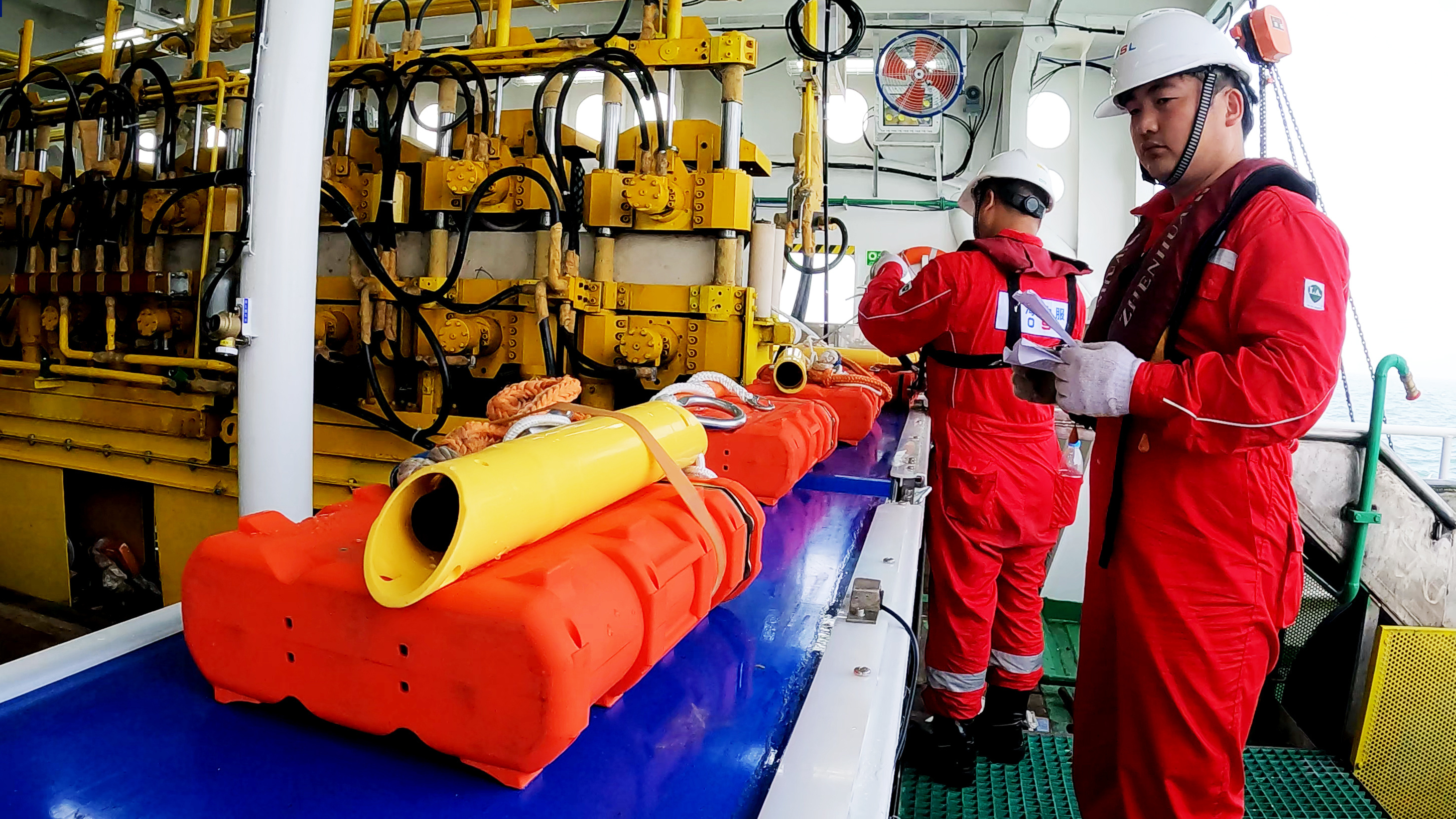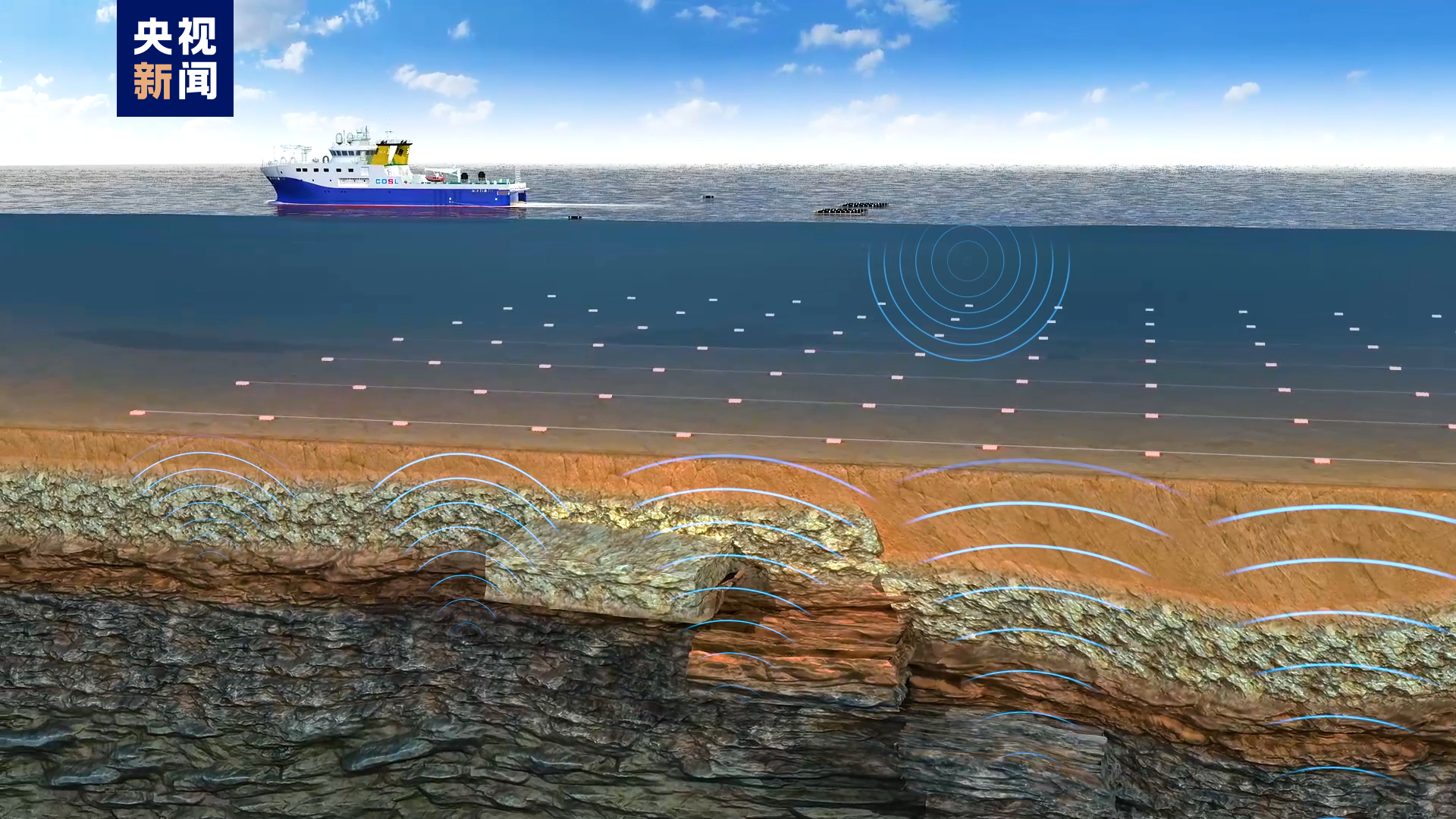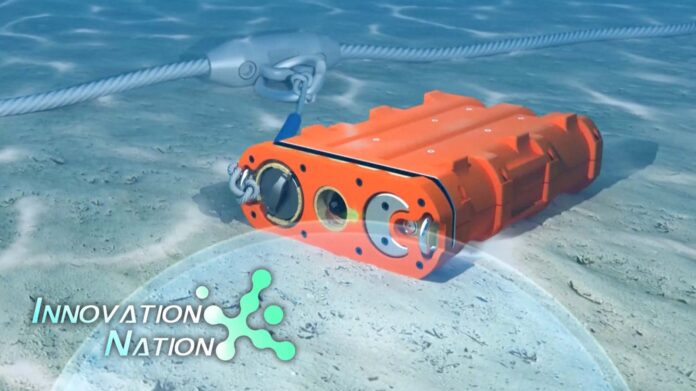BEIJING: China’s self-developed undersea seismic exploration sensor Haimai, or “Sea Pulse,” went into operation in the Bohai Sea on Thursday, marking a major breakthrough in the country’s technological development of high-end offshore oil and natural gas exploration.
The “Sea Pulse,” a node-mode undersea seismic data exploration and acquisition equipment that adopts several leading-edge technologies, including an ultra-low noise acquisition circuit, has enhanced detection of weak signals with super sensitivity, according to China National Offshore Oil Corporation (CNOOC).
The device is capable of detecting seismic waves 10,000 meters under the seabed, capturing seismic signals undersea equivalent to 1/150 of the sound of a mosquito, as well as describing high-definition oil and gas reservoir data, said the CNOOC.

Technicians check China’s self-developed undersea seismic exploration sensor Haimai, or “Sea Pulse.” /CMG
Flexible device with high accuracy
Ruan Fuming, a technical expert at CNOOC, told China Media Group (CMG) that “the Sea Pulse is small in size, flexible in deployment, and it is adaptable to a wide range of water depths and boasts high performance at ultra-low frequency. It operates just like ‘clairvoyance,’ which can detect oil and gas reservoirs buried thousands of meters deep.”
Thousands of these devices are regularly placed at designated positions on the seabed to receive seismic wave signals and store and record the signals in the form of data. Upon task completion, they will be retrieved. The data will then be downloaded and analyzed to process seismic profiles to “take the pulse” of the seabed precisely.
“The Sea Pulse can not only carry out accurate detection in exploration blind zones that are difficult for conventional exploration equipment but also be flexibly deployed in large numbers in areas with dense offshore platforms and fixed offshore facilities,” Zhou Bin, an executive at China Oilfield Services Limited, told CMG.
“Its successful operation will help us obtain hydrocarbon reservoir information in deeper formations and complex geological structures in a more clear and accurate manner.”

A computer-generated image of hydrocarbon reservoir information data based on China’s self-developed undersea seismic exploration sensor Haimai, or “Sea Pulse.” /CMG
Surging offshore energy supply
China has been making strenuous efforts to develop oil and gas projects to ensure energy supply in recent years.
This July, the country’s National Energy Administration held a meeting to further promote oil and gas exploration and development.
The administration pointed out that, in the past five years, China’s oil and gas exploration and development in the ocean has been pushed forward to deep water, with offshore crude oil output in 2022 reaching 58 million tonnes.
Offshore crude oil has become China’s main force to increase the country’s overall output of crude oil, according to the administration.























